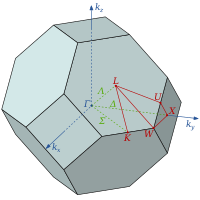
Photo from wikipedia
Proton capture on the excited isomeric state of ^{26}Al strongly influences the abundance of ^{26}Mg ejected in explosive astronomical events and, as such, plays a critical role in determining the… Click to show full abstract
Proton capture on the excited isomeric state of ^{26}Al strongly influences the abundance of ^{26}Mg ejected in explosive astronomical events and, as such, plays a critical role in determining the initial content of radiogenic ^{26}Al in presolar grains. This reaction also affects the temperature range for thermal equilibrium between the ground and isomeric levels. We present a novel technique, which exploits the isospin symmetry of the nuclear force, to address the long-standing challenge of determining proton-capture rates on excited nuclear levels. Such a technique has in-built tests that strongly support its veracity and, for the first time, we have experimentally constrained the strengths of resonances that dominate the astrophysical ^{26m}Al(p,γ)^{27}Si reaction. These constraints demonstrate that the rate is at least a factor ∼8 lower than previously expected, indicating an increase in the stellar production of ^{26}Mg and a possible need to reinvestigate sensitivity studies involving the thermal equilibration of ^{26}Al.
Journal Title: Physical review letters
Year Published: 2021
Link to full text (if available)
Share on Social Media: Sign Up to like & get
recommendations!